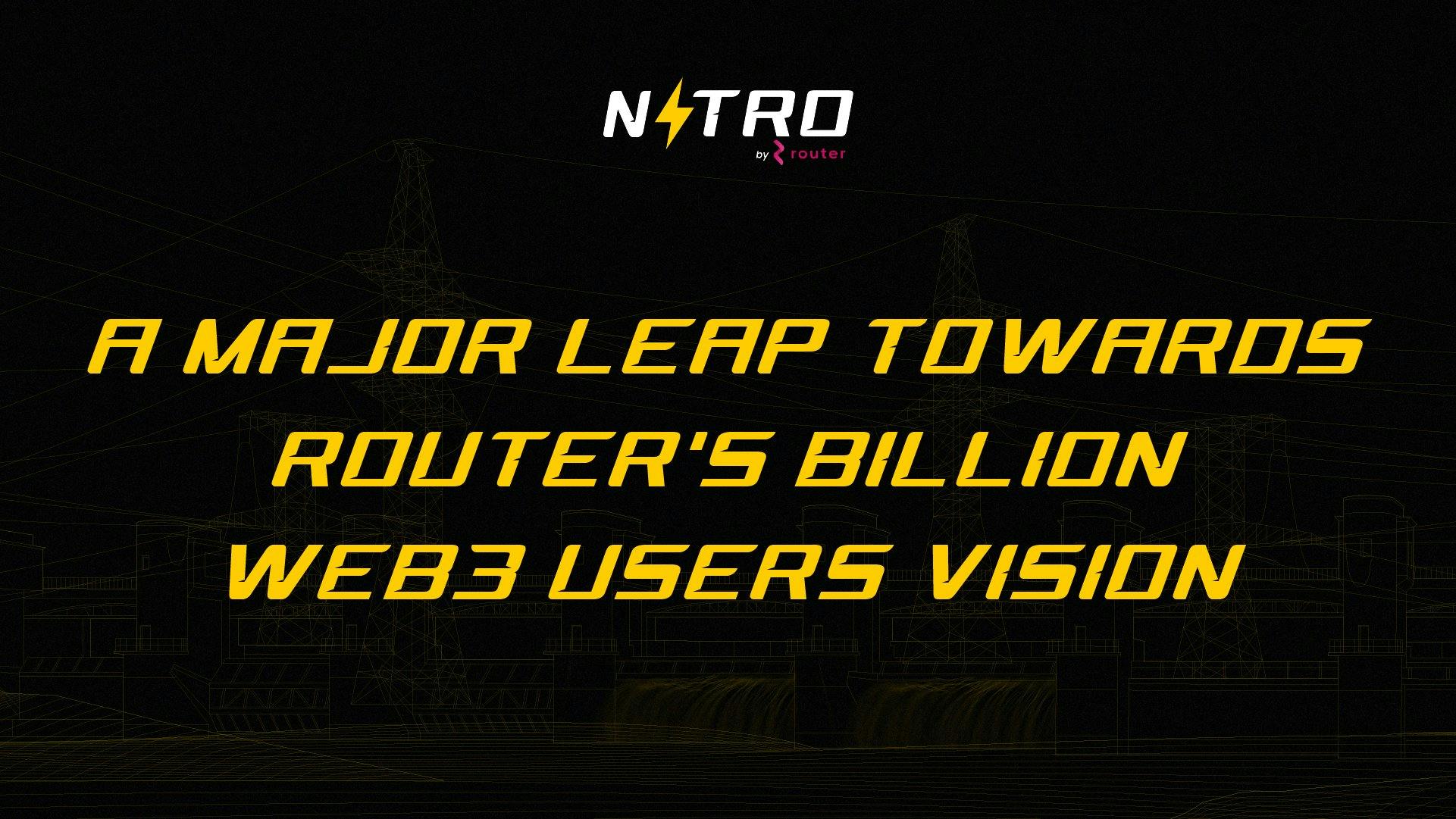
A Major Leap Towards Router’s Billion Web3 Users Vision?
Interoperability with Intelligence to foster user adoption
This discussion explores how Router has transitioned from facilitating basic asset transfers to creating a comprehensive interoperability suite, including a blockchain-as-a-bridge concept. The focus also includes the technological breakthroughs and strategic decisions that are shaping Router’s path towards enabling a more interconnected, user-friendly Web3 ecosystem!
Early Initiatives and Web3 Evolution
Tracing the origins of Router Protocol’s vision: to onboard the next billion users onto Web3. 2020 saw the advent of “Ethereum Killers” and an explosion of Layer 1 blockchains. Someone had to work on the movement of assets between these siloed ecosystems.
Router leapt forward with its bridging solution and became one of the earliest proponents of interoperability, launching our early version of an asset transfer bridge.
As the web3 space evolved further, NFTs grew in popularity, and so did dApps across ecosystems. The realisation that even NFTs needed to be bridged and dApps faced the problem of user-base and liquidity fragmentation dawned on. Router abstracted the capabilities of its bridge to be useful to dApps in the form of a widget/ API or an SDK and developed cross-talk for general message passing.
Amidst these technological advancements, our community has grown, currently boasting 70k+ followers on X and a vibrant 25k+ member community on Telegram and Discord.
Router’s Genetic Evolution
By 2022, we realised that the bridging technology needed a major overhaul. We then pursued the idea of using a blockchain as a bridge — an ambitious but robust approach in a pleasant contrast to the approach taken by incumbents.
We built our own Layer 1 blockchain utilising the Tendermint Consensus of Cosmos. This implied that we now had composable stateful middleware, which meant that bridging with intelligence was a real possibility. We coined the term IDapp, referring to dApps that were interoperable by default if deployed on the Router Chain.
Testnet Mandara of Router Chain went live, and several prominent Layer 1 and Layer 2 testnets were integrated. We started developing an ambitious gamified platform to simulate a truly interoperable ecosystem. More on this will be unveiled as we move closer to the mainnet in Q1 of 2024.
Besides, the journey has been about forming a wide range of partnerships. Router has closed more than 90 partnerships with notable projects in this industry from L1s & L2s like Near, Tron, Linea, and Scroll to Dapps like Rango, Frontier, etc., we covered a long journey.
Current State, the Interoperability Suite, & the path to user adoption
As things stand today, we have successfully developed an infrastructure that is arguably one of the best interoperability suites in web3.
A modular, intents-based, cross-chain solution built on Layer 1 blockchain, whose capabilities can be abstracted for web3 businesses, with an upcoming flagship dApp — Router Nitro that promises to be fast, secure and at least 60% cheaper than incumbent solutions. Great, but perhaps not enough to bring in the deluge of users from an adoption standpoint to web3.
Check out Router Nitro here — https://nitro.routerprotocol.com/swap
The realisation was loud and clear in the recently concluded X Spaces that saw participation from major DEXes in web3 like Sushiswap, Trader Joe, Levana, DODO, etc.,
Web3 needs a composable interoperability solution. Liquidity fragmentation and the cost of deploying on multiple blockchain ecosystems is a problem. In this context, Davide’s insights from Trader Joe are crucial, where he emphasises the importance of the deployment approach over mere execution during the Spaces.
Security is of utmost importance and priority. Router’s infrastructure is solving for all of this.
“Security should be, first and foremost, the base consideration of user experience when you’re building a product”
- Jared Grey, Head Chef, Sushiswap
An icing on the cake, as Jonathan, Levana Protocol highlighted how platforms need to relocate the resources to improve the experience– Over the last month, we at Router have solved the last mile of truly simplifying the user experience and onboarding.
The Complexity of Blockchain Interactions
Blockchain technology, with its promise of decentralisation, has heralded a new era of digital interactions. It has led to the birth of decentralised applications (dApps) that operate without a central authority. However, this decentralisation comes at the cost of complex interactions, especially when involving different blockchain networks. In blockchain vernacular, an intent represents a user’s aspiration to perform a specific operation. Yet, the voyage from a vague user intent to a programmable, executable intent often entails navigating a quagmire of protocols and procedures.
Picture this. A user says, ”I have 100 USDC and wish to stake it.” While this statement reveals the user’s desire to stake USDC, it lacks specifics like the blockchain network the USDC is on or the chosen staking platform. This lack of detail renders the intent too broad to be actionable in its current form.
The manual resolution would involve several distinct steps. First, the user must decide where to swap USDC for the required cryptocurrency (e.g., Ethereum), considering factors like exchange rates and fees. If the USDC is on Polygon and the staking is on Ethereum, they must use a bridge service to transfer assets. Finally, the user navigates to the staking platform (e.g., Lido on Ethereum) to complete the staking process. This entire procedure involves interacting with multiple dApps, executing various transactions, and dealing with different user interfaces and protocols.
It typically involves around 27 clicks, interactions with 3 different dApps, 6 wallet interactions, and up to 15 minutes of effort. Not to mention the need for the user to be familiar with multiple blockchain networks, their respective gas assets, and the processes for acquiring these assets. Additionally, knowledge about bridges for asset transfer and navigating through decentralised exchanges or aggregators is essential. This complexity and time investment add a significant inertia to user onboarding.
At Router, we have found a way to solve this! Stay tuned for more.
Happy Thanksgiving.
Website | Twitter | Telegram | Discord | Reddit | Youtube | Instagram
